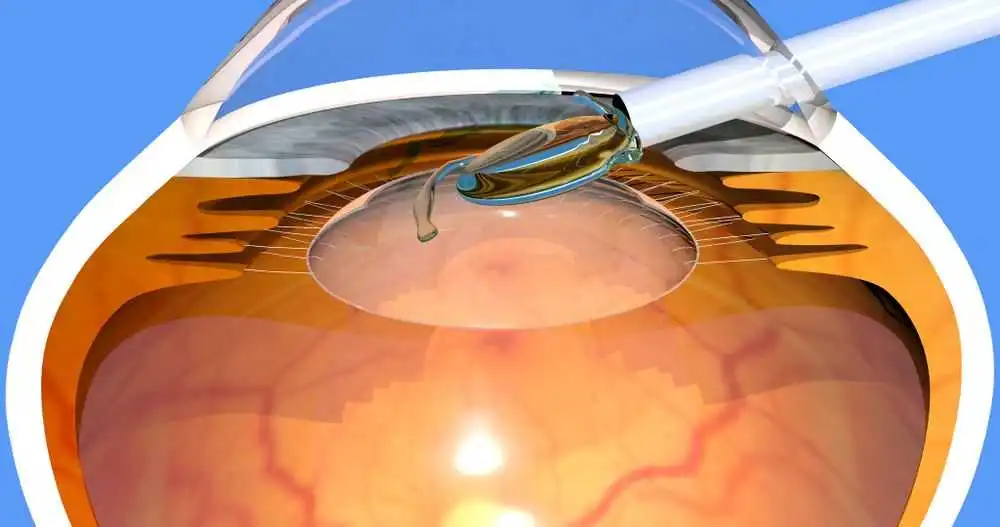Intraocular lenses (also known as IOL) are implanted in a patient's eye during surgery to remove cataracts. During the "refractive lens replacement" procedure, the surgeon replaces the natural lens with these medical devices.
Before the 1980s and the introduction of intraocular lenses, if a patient had a cataract removed, they had to wear very thick glasses or special contact lenses to see after the operation. There was no medical device implanted in the eye to replace the focusing power of the natural lens.
Today, there is a wide variety of premium IOLs to choose from. The most appropriate intraocular lens for a patient depends on many factors, including the patient's lifestyle and specific visual needs. "Product" multifocal intraocular lenses are available with advanced features beyond those found in basic single vision IOLs.

Intraocular Lens (IOL) implantation involves placing a lens inside the eye instead of placing it on the surface of the eye (contact lens). Implanting a lens inside the eye (permanent lenses) can correct a wider range of vision problems compared to other procedures to improve vision.
Permanent lenses can be used to correct nearsightedness, farsightedness, astigmatism (refractive problems), and age-related vision problems. However, IOL implantation is more commonly used to treat cataracts.
IOL implantation is one of the most common and straightforward procedures in Iran, especially in Shiraz, performed by experienced surgeons like Professor Qasemi Fard.
Based on this, various eye procedures such as LASIK, Epilasik, FemtoLASIK, Femtosmile, and others can correct eye defects and vision problems. However, permanent lens implantation is one of the most effective treatments, especially for treating cataracts and vision impairment after retinal detachment in diabetic patients.
If you and your doctor decide you are a candidate for an intraocular lens implant, you’ll set an appointment to meet your surgeon for a presurgical exam and evaluation of your specific situation. At this consultation your surgeon will advise you how to prepare for your upcoming surgery:
You’ll be asked to arrive 45 minutes prior to surgery to sign various forms, including your operative consent form. You’ll also receive post-operative instructions and meet again with your surgeon to answer any questions. Because you cannot drive after surgery, please make arrangements to have someone take care of your transportation. In most cases, there is no pain involved. The surgery is usually done with relaxing medications and a local anesthetic .

Recovery time is typically one or two days, but every person is unique and your healing experience will depend on the underlying health of your eye and the ease of your surgery. In addition, an unnatural element has been introduced into the body, making it all the more important to plan regularly scheduled visits for your surgeon and technician to monitor your progress. Blurry or foggy vision is typical immediately after surgery. Your eyes may feel somewhat sore and gritty, which is also normal. These symptoms will improve and irritation will subside within a few days. Your eyes may also be slightly swollen and you may see red spots (superficial blood) on the whites of your eyes, but these symptoms will also disappear within weeks after surgery .
Materials continue to improve, becoming more pliable and biostable and giving lensmakers greater freedom to address specific vision needs. The earliest IOLs were made with a thermal plastic, a material that improved dramatically over the years, but still had inherent restrictions for microsurgery. Today’s state-of-the-art acrylics offer better plasticity and stability and give surgeons superior control during microsurgery.
Polymethylmethacrylate (PMMA) Once the standard for excellence, these lenses are not as pliable and
conducive to micro procedures as newer materials. Occasionally,
however, some patients require a material with less flex, in which case
your surgeon may recommend a PMMA lens.
Silicone Also a popular choice that is giving way to advanced acrylics better
suited to microincisions. Still, certain biomaterial advantages make
silicone lenses the ideal choice for some patients. Your Edina Eye
surgeon will explain why you may or may not be a candidate for a
silicone IOL.
Hydrophobic Acrylic Today’s most popular choice in part because it’s easy to fold and
ideally suited for microsurgery. Most Edina Eye lens implants are
performed with these advanced acrylics and we cannot speak highly enough
of their qualities and success rate. There are different types
available, and your surgeon will help you understand which qualities you
need and which lens material best suits your needs.
Types of Intraocular Lenses Your surgeon will help you choose the ideal lens for you.
This is an exciting time for people requiring an intraocular lens
implant, as your choices are now safer and more effective than ever.
Your Edina Eye surgeon is an expert on all available lenses and how
their individual benefits pertain to each patient’s needs.
Monofocal Lens Implants These lenses have been around longest and are still the most common
IOLs. Though the quality of materials and designs continue to improve,
the function of the lens remains constant. A monofocal IOL has equal
power in all regions and a single zone of clear focus, producing
excellent vision from a determined distance.
Most patients choose lenses that focus at a far-away point. This
gives them excellent distance vision, but also requires they wear
glasses for near-vision needs like reading. A smaller number of patients
choose lenses that focus at a nearby point. This gives them excellent
near vision, but means they need to wear glasses to see distant objects.
Some patients choose distance vision for one lens and near vision for
the other (called monovision) and rely on the brain’s natural tendency
to compensate, often producing excellent vision near and far. Your
surgeon will discuss this option and explain the key role your dominant
eye plays in the decision.
Multifocal Lens Implants These special lenses continue to evolve with designs that offer a
variety of regions with different power and several zones of clear
vision within a single lens, allowing patients to see a continuous range
of vision from long, intermediate and near distances. Results vary
depending on each person’s eyes and IOL choice, but the vast majority of
patients with multifocal lens implants achieve excellent levels of
clarity and a general improvement over a broad range of vision. Rings
and halos can occur, and your surgeon will discuss these concerns with
you to make sure you understand all aspects of your options.
After implantation, many patients can read fine print and see well
from a distance, a dramatic improvement unachievable not too many years
ago. This includes people with presbyobia. A majority of patients with
multifocal IOLs never wear eyeglasses or contact lenses again. One issue
patients need to consider is how much of the cost will be covered by
Medicare and private insurance. Policies vary, but at this point in
time, much of the cost is often the responsibility of the patient.
Accommodating Lens Implants These revolutionary IOLs flex like a human lens to achieve the
continuous range of vision a person would have naturally. The lens
accommodates itself to the shape of the eye, literally changing its
shape and allowing itself to focus on both far and near objects. After
implantation, patients typically function well without glasses for
distance and intermediate viewing and often do not even require glasses
for casual reading. Glasses are typically needed for fine print and
micro tasks. Here, also, Medicare and private insurance restrictions
apply.
Toric Lens Implants The only lens type that can correct astigmatism, toric IOLs have
different powers in different areas of the lens that align with the
patient’s vision correction requirements. This alignment demands the
lens be positioned in a precise configuration, placing greater emphasis
on your surgeon’s expertise and surgical skill.
Correcting astigmatism often required making microincisions to alter
the cornea’s shape, but advanced toric designs have eliminated much of
this need. Some severe astigmatisms still require a combination of
incisions and implants, but typically toric lenses are implanted and
function as flawlessly as other implants. They also typically reduce the
power of your glasses at all distances and can minimize your need to
wear glasses for distance vision. Again, Medicare and private insurance
restrictions apply.